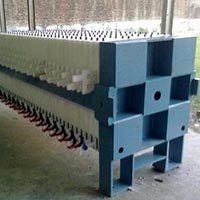
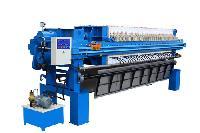
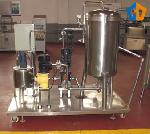
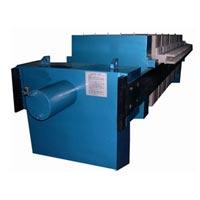

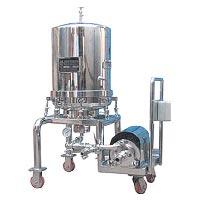
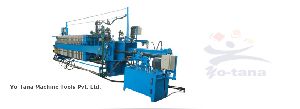
Membrane Filter Press
Get Price Quote
The initial operation of a membrane filter press is identical to that of its recessed chamber counterpart. However once the filtration cycle is complete and final filtration pressure is achieved the feed into the filter press is stopped. At this point the plates within the Filter Press can be inflated using either air or hydraulic pressure to exert a mechanical force on the filter cake retained in the chamber. The effect of the squeeze is to physically compress the filter cake and force out additional moisture held within the cake giving a drier end result. Membrane filter plates are used to Reduce filter cake moisture content Reduce filtration cycle time Improve cake washing This style of filter plate can be installed as A full plate pack Alternately in conjunction with recessed companion plates as a more economical option. Because of its simplicity and flexibility, the chamber Filter Press has been widely applied in clarification and dewatering applications. Membrane Filter Press technology is gaining increased acceptance because it reduces subsequent processing or disposal costs for filter cake. In many applications the membrane Filter Press significantly reduces residual moisture content, making this technology attractive for new plants and for upgrading existing facilities. In both cases the careful selection of plate and membrane materials is essential to the successful performance of the process. Membrane Filter Press Plates have a chamber below the drainage surface that can be inflated. The common method used is water pressure, which is generated by pumping into the squeeze cavity to inflate the face of the plate against the filter cake. Membrane Plates are used to reduce the cake moisture content & shorten the filtration cycle time. Mix Pack Membrane are the most common configuration (one recessed plate then one membrane plate alternate in the press plate pack). Membrane Plates usually operate at a feed pressure of up to 7 bar and squeeze pressure up to 15 bar. Special plates can be designed for higher feed & squeeze pressure. Replaceable membranes can easily changeable. EPDM thermoplastic and other compounds are used for specific conditions. Plate filling problems are minimized and use of a rubber Membrane enables “empty-chamber” operation without damaging the plate, resulting a considerable reduction in incidents of plate failure. Even if the chamber is not completely filled, the filter cake is squeezed by the inflating filter lever and therefore perfectly dewatered. During the initial phase of the filtration cycle, so-called “fill and filtration” the process is similar to the chamber Filter Press. After reaching a predefined pressure, usually around 3 - 7 bar, depending on the sludge characteristics, sludge feeding is stopped & the rubber membranes inflated, using either water or air as squeeze medium. The cake is hereby compressed and dewatered further. Then the squeeze medium is relieved & the cake discharged.
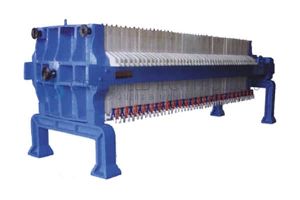
Membrane Filter Press
Get Price Quote
1 Piece (MOQ)
The membrane strainer is a solid liquid separation equipment using the principle of pressure feeding. It is being used successfully in almost every industrial filtration processes. It includes a series of filter / strainer plates and frames or recessed plates which are arranged alternately. A filter / strainer medium is provided in between the plates. A feeding pump is utilized to force the liquid through the medium leaving the solid trapped inside. Because of its simplicity and flexibility, the chamber Membrane Strainer has been widely applied in clarification and dewatering applications.
Best Deals from Membrane Filter Press
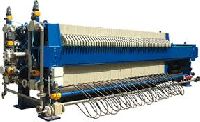
Membrane Filter Press
Get Price Quote
Membrane filter press plates utilize an impermeable, flexible member attached to the filter press plate core. This terminology should not be confused with sub micron "membranes" used in ultra filtration or reverse osmosis. In filter presses, a membrane, also called a diaphragm, is designed to inflate by compressed air or pressurized water to squeeze residual moisture out of the formed filter cake. Polypropylene membrane plates supplied in FILTER PRESS INDIA Filter Presses have been in use for more than ten years with significant success. Theses plates are currently in many severe applications - some operating two cycles per hour, 24 hours per day for two years - tens of thousand of cycles without failure.

Fully Automatic Membrane Filter Press
Get Price Quote
Fully Automatic Membrane Filter Press is Manufactured, Exported and Supplied by us contains P.P. Rubber Membrane Filter Plates and a mechanical de- watering of the filter cake is possible. These are equipped with an exchangeable soft rubber squeezing Membrane. The two squeezing Membranes are of the same design and can thus be exchanged with one another. This Membrane plate is always used in combination with a recessed Filter Plate. Due to this combination one squeezing membrane is acting in each Filter Chamber. Features Uses air as a pressure medium The squeezing pressure can be chosen up to 6 to 18 Kg./cm2 Offers more convenience as compared to the traditional filter press with recessed plates
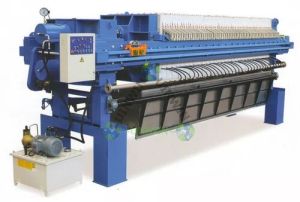
Membrane Filter Press
Get Price Quote
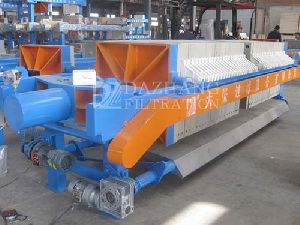
Membrane Filter Press
Get Price Quote
Despite being more expensive, these filters are becoming used more frequently. On the outside, these filter presses look like conventional filters but one of the inner surfaces of each chamber is coated with a polypropylene membrane or a rubber membrane .
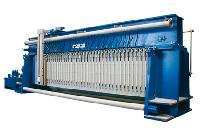
Plate and Membrane Type Filter Press
Get Price Quote
Plate and Membrane Type Filter Press, Filter Press, Automatic Filter Press
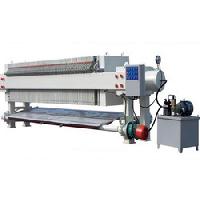
membrane type filter press
Get Price Quote
membrane type filter press, Auto Shifter Type Filter Press, Filter Press
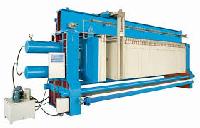
Membrane Filter Press
Get Price Quote
Membrane Filter Press, Filter Press, Automatic Filter Press